Water resistant, automatic winding, chronometer-certified, a date window
— in 1945, the Rolex Datejust was the first watch that could offer all this — just about perfect. Nevertheless, Rolex has continued to improve upon it.

What does the perfect watch look like? Automatic winding, three hands, a date display, accurate, sturdy and water resistant — you really don’t need more than that. No wonder the first watch with just these characteristics was a great success: the Rolex Datejust, which first appeared in 1945. Perfection is often achieved in small steps and so it was with Rolex. The brand introduced the water-resistant Oyster in 1926 and added the Perpetual automatic movement in 1931. The perfect watch for everyday wear was then created with the Oyster Perpetual Datejust.
Rolex founder Hans Wilsdorf not only had a feel for the needs of the market; he also knew how to position his brand and its innovative technology to be both interesting and eye-catching. The names he chose were ingenious: the waterproof Oyster case, the Perpetual movement (to describe the movement of the wrist that continuously winds the mainspring) and the Datejust model (to highlight the instantaneous advancement of the date at midnight).

At the beginning of 1945, the Datejust was only available in gold. And this was also its 40th anniversary year, so Rolex named the metal bracelet developed for the Datejust the “Jubilee” bracelet. By the end of the 1940s, the company began producing the Datejust in steel, which was powered by the Rolex 730 automatic movement in these early years.

The design underwent slight changes at the beginning. Despite its exceptional wearability, Rolex did not rest on its laurels and continued making improvements to the Datejust. In 1954, Rolex added the famous Cyclops lens magnifier for the date. And beginning in 1955, the date advanced in the blink of an eye. In 1957, the new automatic movement 1065 allowed for a thinner case. Collectors know the watches built before this time as “Bubble Backs.”

The well-known design with its obelisk hands, fluted bezel and rectangular index hour markers has been in place since the early 1950s. In 1965, automatic movement 1570 was selected for the Datejust and in 1972, a hack mechanism allowed for the precise setting of the time. In 1974, Rolex was the first manufacturer to use a scratch-resistant sapphire crystal, and in 1977, Caliber 3035 with its red anodized, friction-reducing wheels added the Quickset date. In 1977, there was also an Oysterquartz Datejust with a quartz movement that was developed in-house by Rolex.
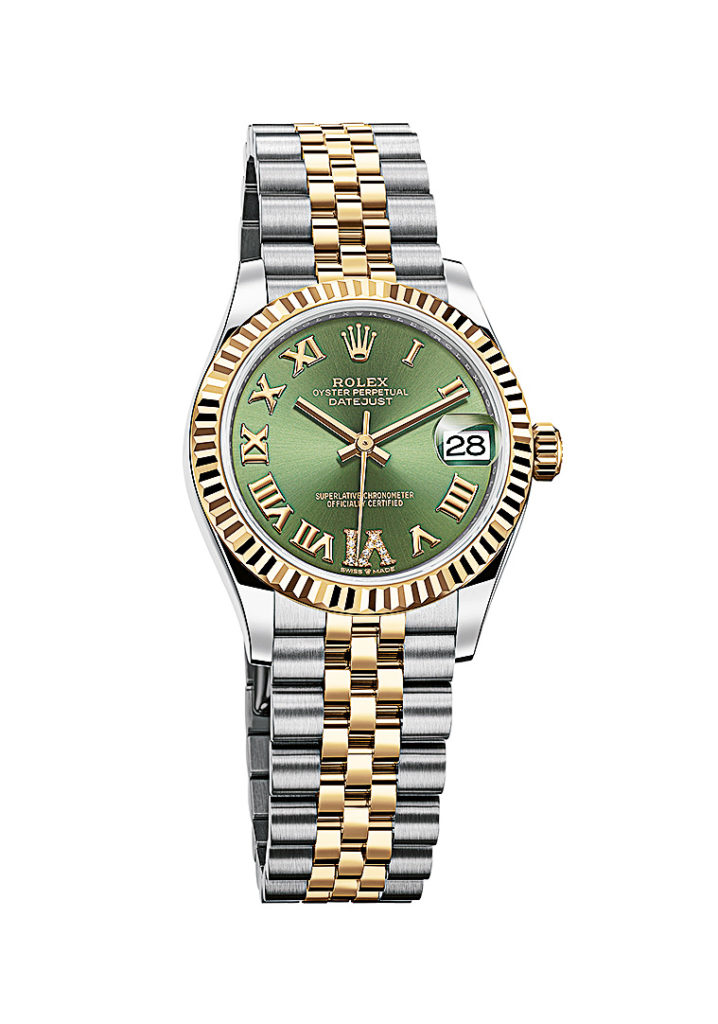
In 1988, the Datejust began to be powered by automatic Caliber 3135 with a balance bridge and an improved self-winding mechanism. The case size of the original version remained unchanged with a 36-mm diameter. At that time, there were only two smaller versions: 31 mm and 26 mm. While men once wore the 31-mm model, eventually even the 36-mm version seemed too small. Although Rolex long resisted the move to larger Datejust models, in 2009, the company introduced the 41-mm Datejust II, which was replaced in 2016 by the Datejust 41, which was same size but had a new movement and updated case.
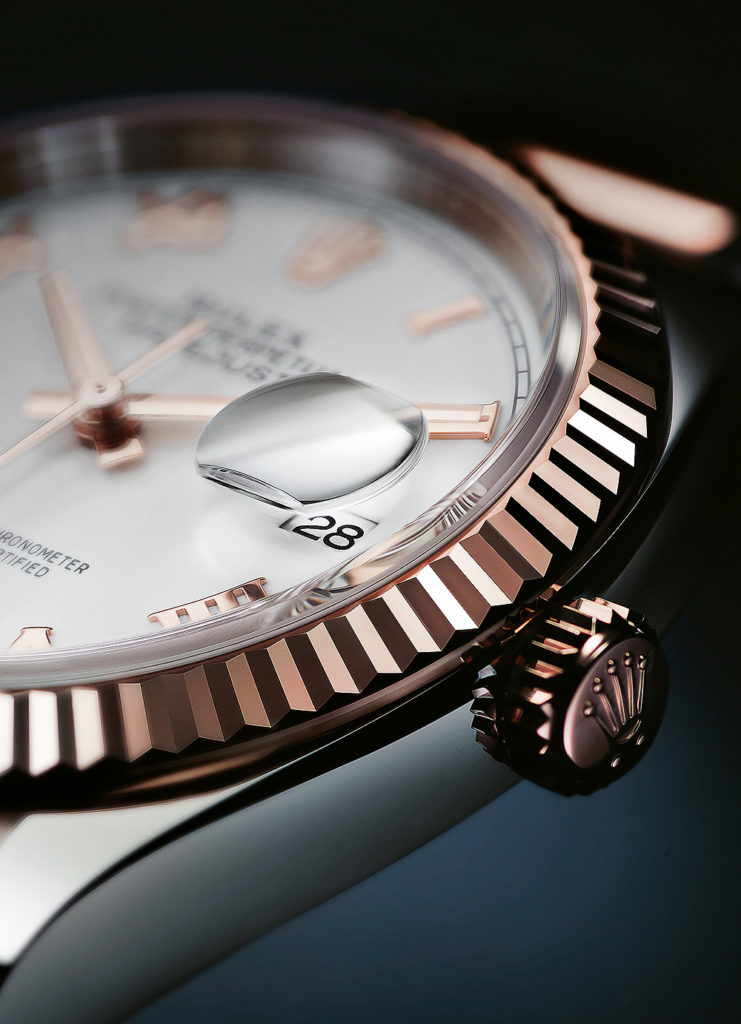
Elegance and Sportiness
Of course, technical features are not enough for the success the Datejust has achieved. Since its remarkable popularity with its appealing design, other manufacturers have followed and began offering comparable models of their own. Rolex created the perfect combination of elegance and sportiness with the Datejust. It can be worn just as easily with a suit as with jeans. And Rolex gave it an enormous variety of configurations, something that usually plays a lesser role. The Datejust offers a choice of radial Arabic or Roman numerals, rectangular or diamond markers, a wide range of dial colors, and dials made of malachite, mother-of-pearl or embellished with precious gems.
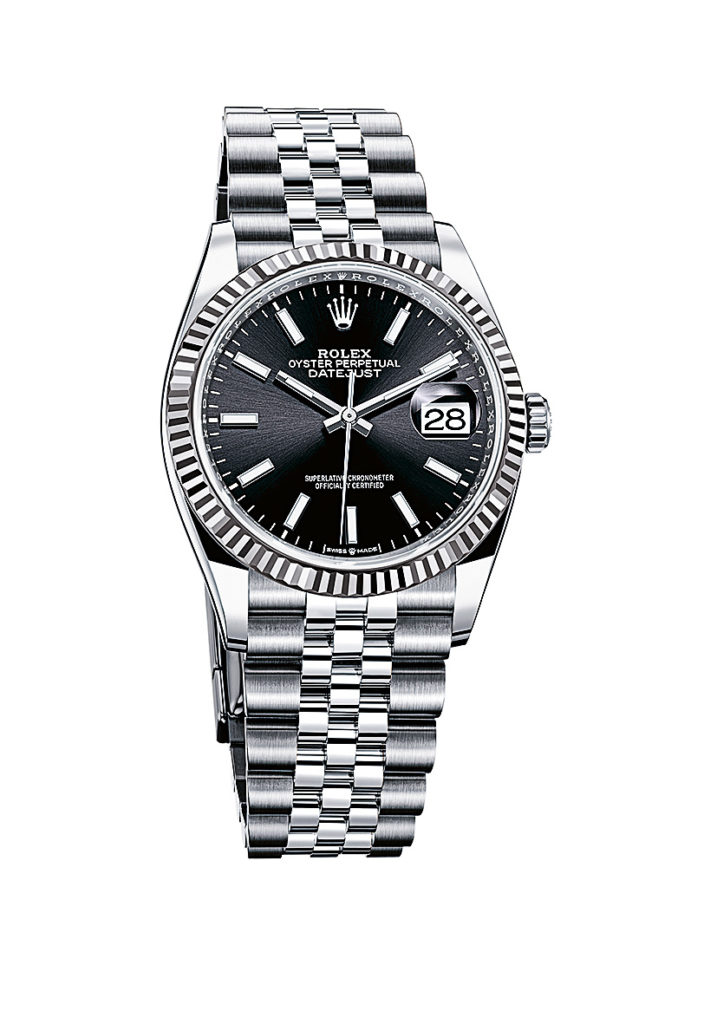
There are a number of different case materials as well. Stainless steel 904L — which Rolex calls “Oystersteel” — is more resistant to corrosion and harder than standard 316L steel. There are also two-color versions known as “Rolesor,” where the case and outer bracelet links are made of steel and the bezel, crown and inner links of the bracelet are made of 18k gold. A White Rolesor model has a white-gold bezel only. Bezel options include fluted, domed or set with diamonds. And in addition to the typical Jubilee bracelet for this line, Rolex also offers the sportier Oyster bracelet. No leather straps are available but both metal bracelets have a 5-mm fold-out extension. A steel bracelet does not “give” like a rubber or leather one so the extension can bring some welcome relief in warmer temperatures or during periods of increased activity. It is designed to look identical to the bracelet even in the extended position.

The two men’s Datejust models start at $7,050 for the 36-mm version and $7,650 for the 41 mm, plus there are three smaller versions measuring 34 mm (from $6,500), 31 mm (from $6,400) and the Lady-Datejust at 28 mm (from $6,500), which is also available in a yellow-gold version with a diamond-pavéd dial ($38,800).
Updated Movements
The various sizes also differ in the type of movements cased within. The 28-mm version is powered by new Caliber 2236. A notable feature of this movement is the Rolex-developed antimagnetic Syloxi hairspring made of silicon with an oxide coating. This caliber also has a power reserve of approximately 55 hours. The 31-mm version encases Caliber 2235, which has a power reserve of 48 hours. The 3135 caliber with a 48-hour power reserve is used in the 34-mm version, and the men’s versions in 36 and 41 mm are powered by new Caliber 3235.

The 3235 is an updated movement based on the proven accuracy, sturdiness and durability of its 3135 predecessor. Rolex modified over 90 percent of its components and has been awarded 14 patents related to this caliber for design or production processes. Shock absorption and reliability were increased, and the winding mechanism works more efficiently and more quickly restores the power reserve, thanks in part to the ball-bearing oscillating weight. The power reserve has also been increased from 48 to 70 hours. Rolex optimized space with a thinner barrel wall, which allows for a longer mainspring, and added the innovative Chronergy escapement that increases the efficiency of the Swiss lever escapement by about 15 percent thanks to the modified geometry and cutout design to reduce weight and inertia. The nickel-phosphorous alloy escapement is produced using the LiGA process and is resistant to magnetic forces. The new balance staff also improves magnetic protection. The blue Parachrom hairspring made of a niobium-zirconium alloy and the Paraflex shock absorber are known from other models. The only thing lacking would be a transparent caseback.
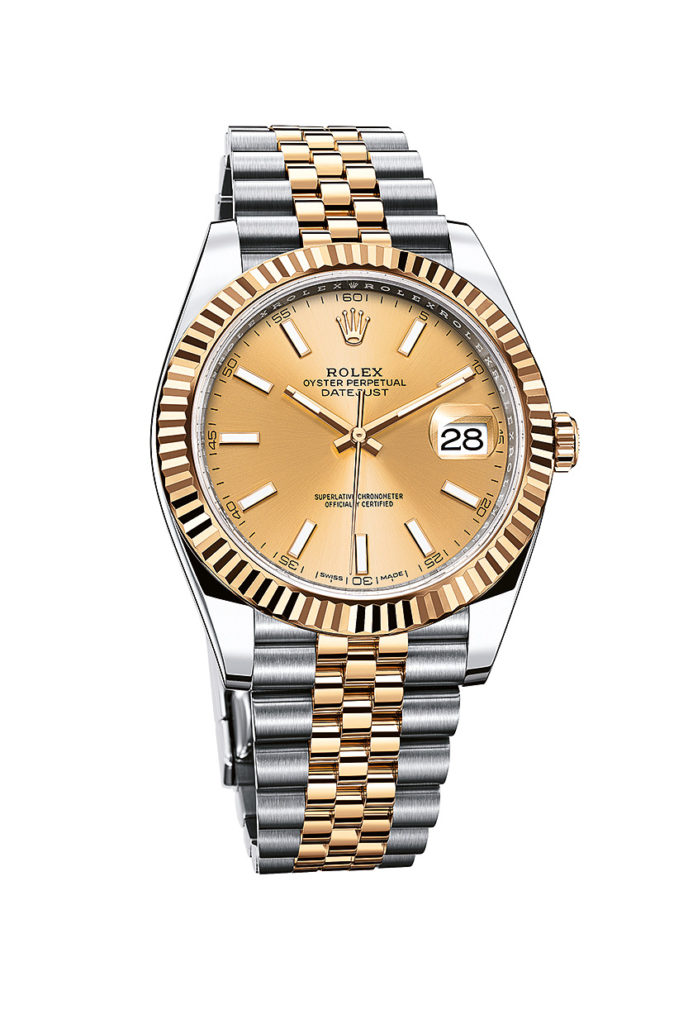
Regardless of size, all of the movements must meet both the chronometer standards and the more rigorous tolerances specified by Rolex itself. Even the smaller ladies’ movements may not deviate more than 2 seconds per day after casing. And thanks to a screw-down crown and threaded caseback, even the smallest models are water resistant to 100 meters.
The Datejust offers almost all of the Rolex advantages but remains the most economical model with a date display in the collection. And although it was almost perfect in 1945, Rolex has continued to pursue and implement improvements over the years. It also shows in the wide range of configurations offered by this Geneva-based manufacture — a watch that can be worn with a business suit or play along with any sport. With a maximum deviation of 2 seconds per day and a power reserve of 70 hours, Rolex has come very close to perfection.
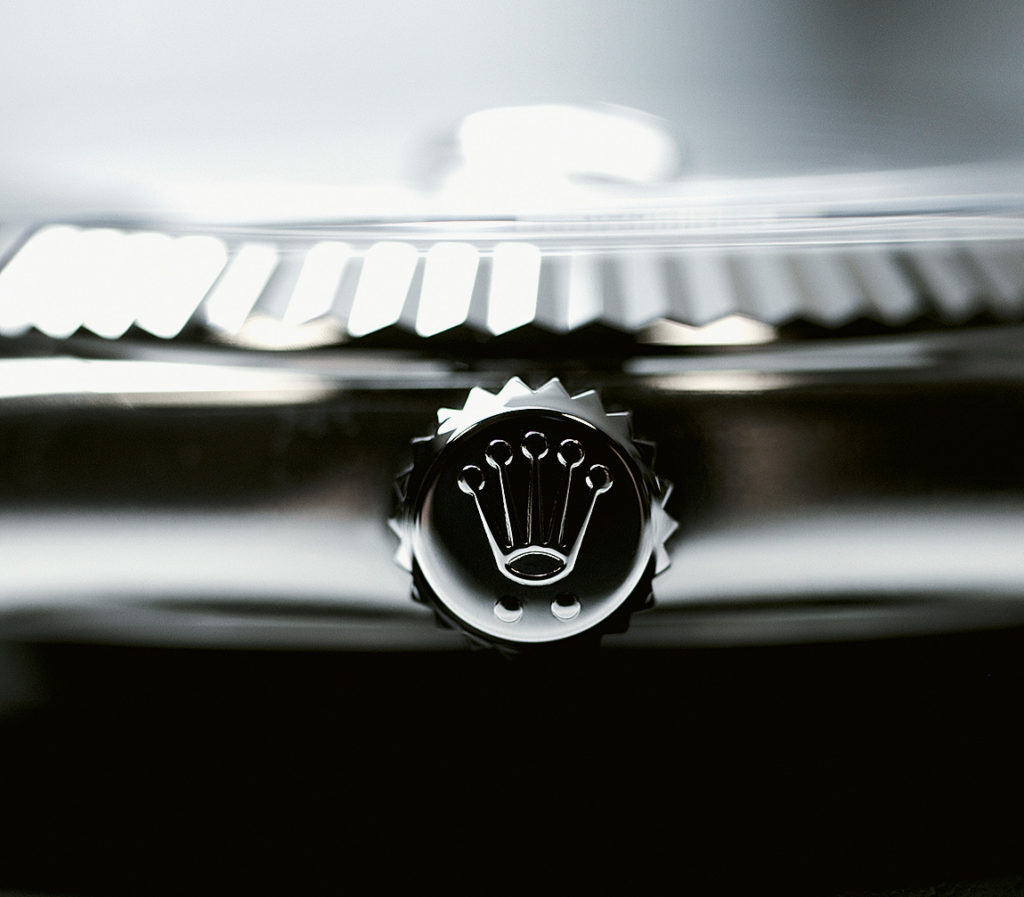


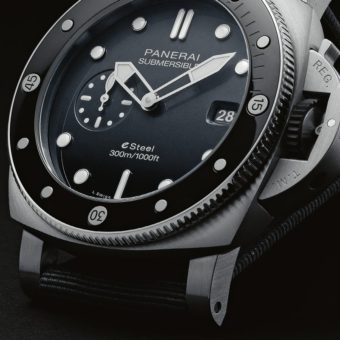
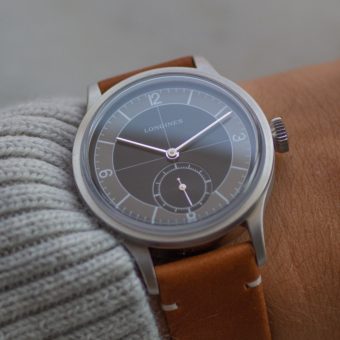
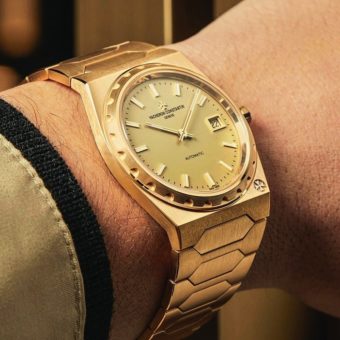
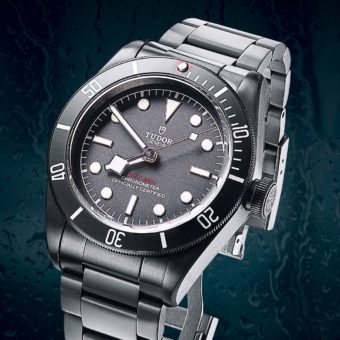
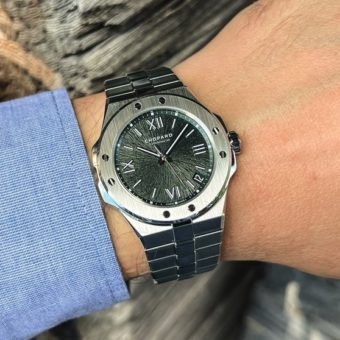
Having a fleet of Rollers at home I can tell you first hand that the 904L is softer than any of my 316L watches cause they dent so much easier. The main difference apart from the corrosion resistance (bonus) is that the 904L somehow has a better sheen that cannot be replicated from a 316L watch. Even Grand Seiko can’t match the Rolex sheen – except for maybe their new formula of steel – but haven’t seen one in the flesh yet to compare…
Now, if we could actually get one. Been waiting 9 months after putting down a 20% deposit with an AD.
A great watch. I’ve owned 3. But vastly overpriced. Citizen thru its Cadisen subsidiary makes a beautiful homage day date automatic in stainless steel, with a Miyota movement and sapphire Crystal, for $100
Rolex is awesome had a few since 1982
When I was 10 in 1955 a nearby downtown jewelry store had a Datejust and another Rolex in water filled bell jars. New I had to have one. I had 1977 Air King andc1987 Oyster Date. Now have 1996 16234 Datejust with patonad silver dial, a lovely cream color now.
I purely don`t understand the Rolex hype…
I’ve had the same Datejust for 40 years now. I swim, shower, sleep with it and bang it around mercilessly. About every 7 years or so I send it in to RUSA for an overhaul. This is a really amazing workhorse, plus, I have bragging rights. Love this timepiece.
Excellent article. Love for Rolex is not undeserved.
However, it is stated here that “Stainless steel 904L — which Rolex calls “Oystersteel” — is more resistant to corrosion and harder than standard 316L steel.”
I fact 316L is harder, please see bellow table:
Hardness (Rockwell)
316L-95 904L70-90
Hardness (Brinell)
316L-217 904L-150
904L is more resistant to corrosion than 316L.
Cheers from Tampico, Mexico.
Gilberto
Bonjour l’article a été écrit Met très bien en avant la monte et le savoir-faire de ROLEX je trouve que c’est bien écrit et Montre exceptionnel
Perfect, datejust! Comfortable, what a doctor needs
I love the looks of both the Datejust 36 and the Datejust 41, but I’m crazy about 41’s gold face. The winner of this beauty contest is the Datejust 41.
I have a datejust. It has an acrylic crystal. Ivory dial with roman numerals fluted bezel jubilee band stainless and gold. Would love to know more about my watch. I really love it.
What is the origonal mrp price for all rolex watches
Would like too buy a Rolex watch
i have a Brightling (sp?) womans watch purchased in the islands 25 yrs ago. It was featured in the cataloge that yr. i have the paper work but not the box. its in good shape. i would lke to know its worth. sally george
How much is watch I love it
Get prices
I’m looking for a Rolex GMT
I don’t like the Rolex worded ring around the dial in the new models. I think it is cheap and stupid. Totally unnecessary in a simple and elegant watch.
An absolutely stunning set of timepieces! Aside from precision performance, it’s obvious by sight, why Rolex — of course, I love my Omega, and I consider myself an Omega guy — is arguably the premier Swiss watchmaker.